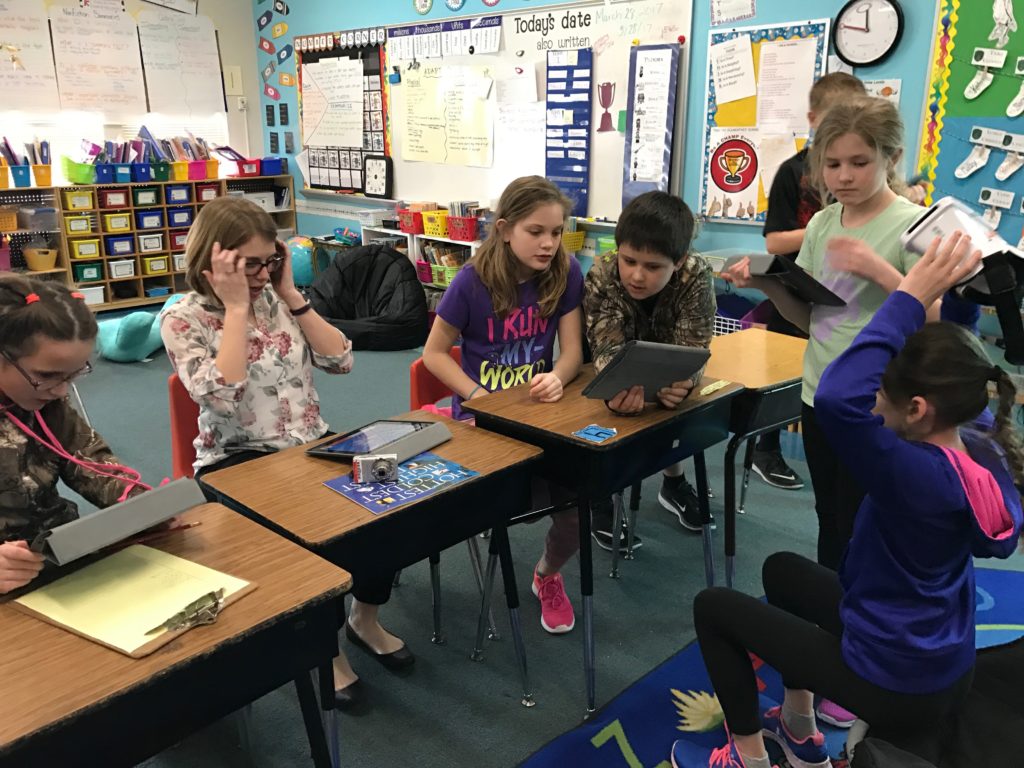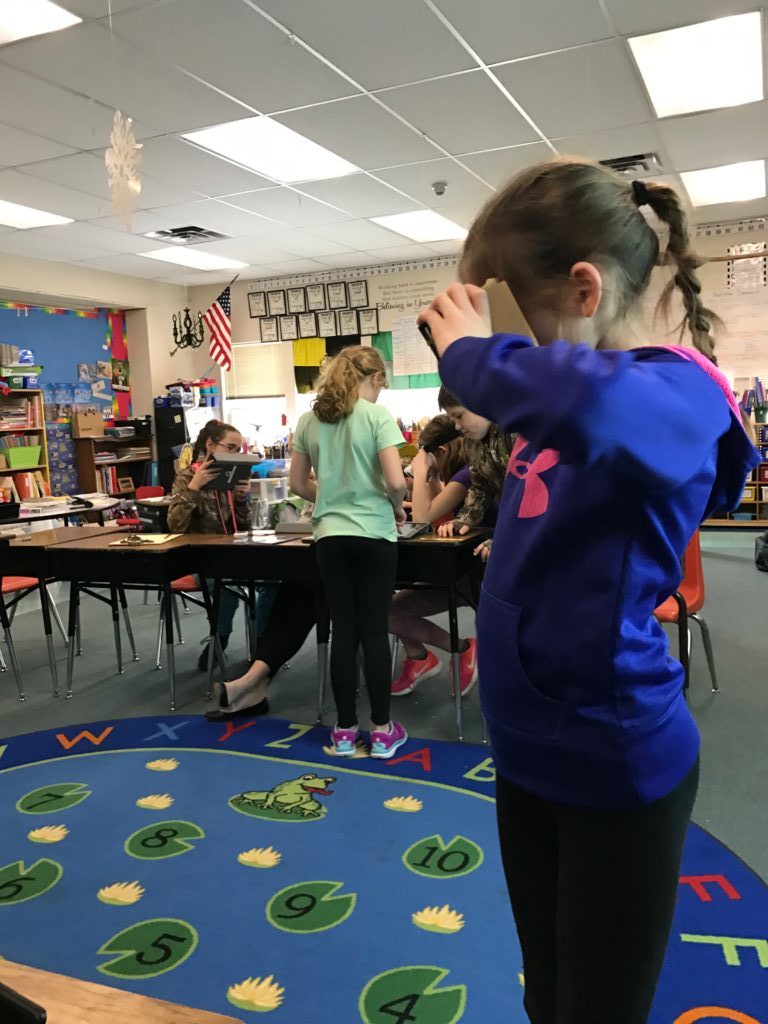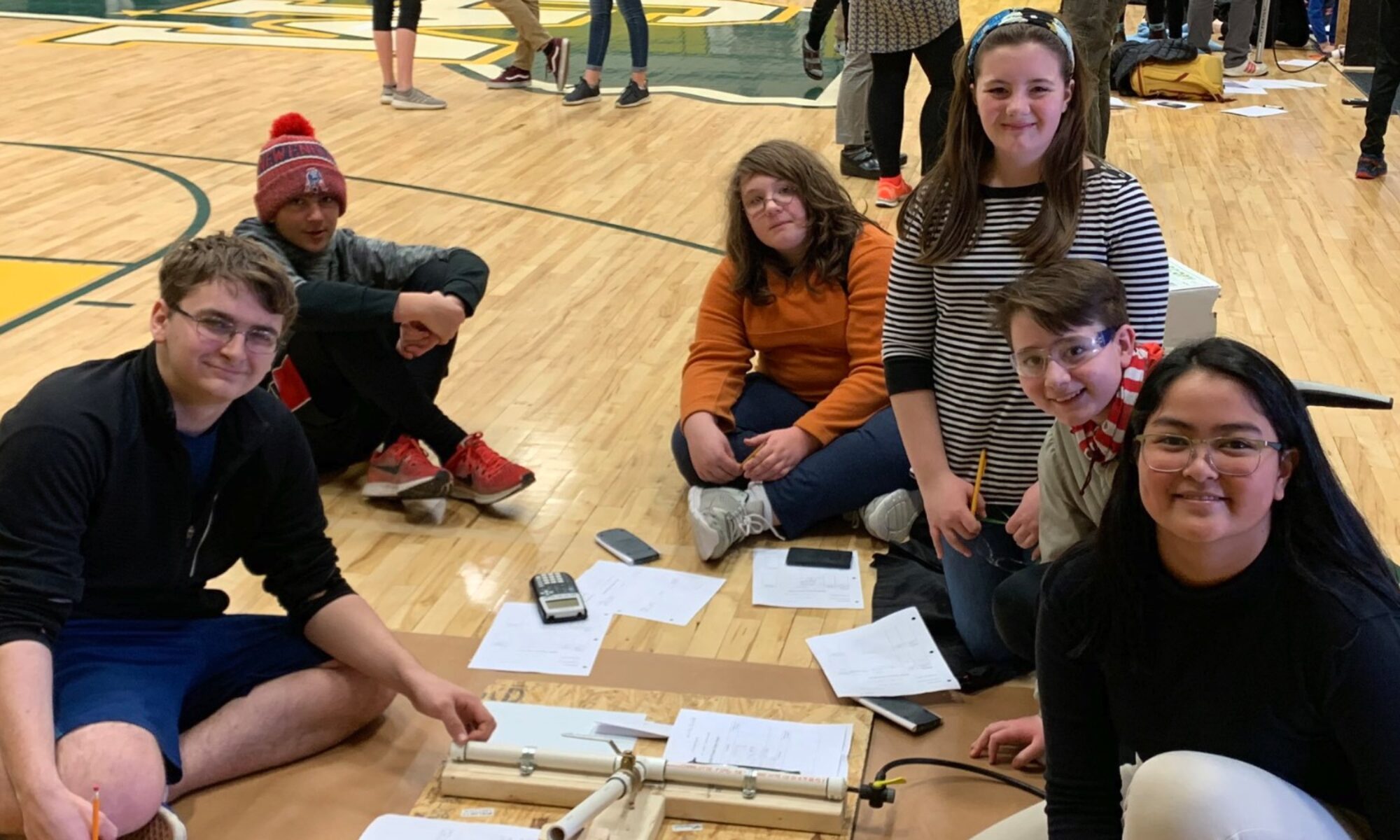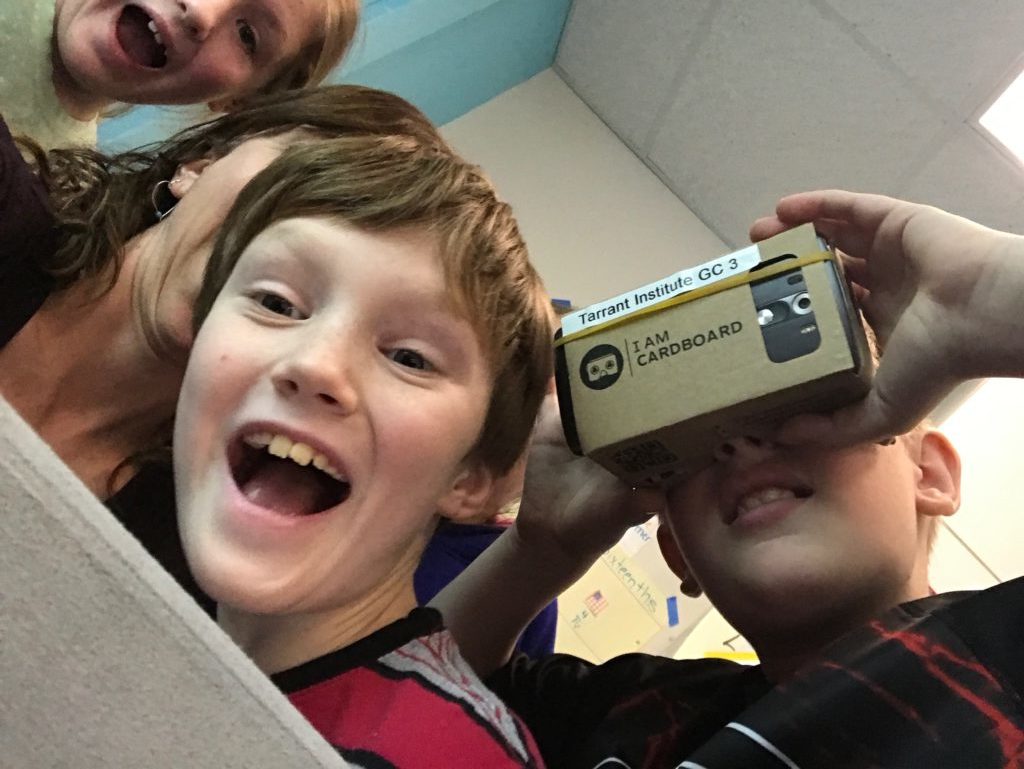VR’s real world impact on students
Virtual reality is exciting and many of our students are already using this technology in gaming (as some were quick to tell me). So why aren’t we using it more in education? Why aren’t we using it in project-based learning?
Maybe we just need some ideas on how to use VR in education. So let’s start by looking at virtual reality in project-based learning (PBL).
Just look at these faces. Don’t they look excited and happy to be right where they are?
Welcome back to Proctor VT
Proctor Elementary School classroom teachers have been hard at work on project-based learning units this year. When I mentioned that we had a set of virtual reality headsets, teachers jumped at the chance to test out how VR could work with PBL.
And that’s how I found myself becoming the Virtual Reality fairy.

I spent the morning watching a classroom full of fourth and fifth graders come alive to the material in their headsets. They took turns, they worked in groups and engaged not just with the shiny shiny content but with each other, sharing the wonder.
While we were using the Expeditions, when recess time came not one student wanted to leave. When it turned out to be an indoor recess, the class actually cheered. And that is what we mean by ubiquitous learning — happening all the time — during recess, at home, after school, all around. When students are engaged and excited, they don’t notice time passing.
Watching the students scramble to take advantage of the extra time with their devices, I realized there are four big ways VR can make project-based learning come alive.
1. Use virtual reality as an entry event
Many units of study are hard to visualize for students and can seem disconnected. It can be challenging for students to connect to topics they can’t imagine.
Entry events in project-based learning motivate and excite students. Teachers can use virtual reality and Google Expeditions to drop students into particular environments and ask those students to make observations and ask questions. This can be the springboard for a project-based learning unit driven by student interest, excitement and motivation.
2. Use virtual realty to deepen research in PBL
Students usually do a good amount of research in PBL. Virtual reality can give students an immersive experience in which to observe and take notes from. When coupled with focusing, inquiry based questions, students can deepen their research. Questions like:
- What do you notice about this environment?
- How is this different than the environment that you live in?
- What questions do you have? What research can you do to discover answers?
- How is being in this environment through virtual reality helping you learn about your subject?

3. Use virtual reality to guide driving questions
Students at Flood Brook School, in Londonderry VT, were studying immigration and the refugee crisis. With virtual reality, they deepened their understanding of the living environments of children just like them, across the globe, who have to leave their home countries due to violence or natural disasters.

Virtual reality can help students become more deeply and personally engaged in topics. When choosing a question to explore for project-based learning, taking the time to experience materials related to that topic can encourage students to think more critically about their driving questions.
4. Use virtual reality to create culminating events
As we look at ways we can help students move from consumers to creators with this new technology, we can turn our attention to culminating events and authentic evidence. Students yearn to be understood, to have their personalized, student-driven learning received with enthusiasm and engagement. What could it look like to for students to create their own Google Expeditions? For an audience to deeply grasp and engage with what they’ve learned through PBL?
Bringing VR and PBL full circle, y’all.
But most of all: combine virtual reality with PBL best practices
Virtual reality is just one new tool for project-based learning. It is not everything. But it is a tool that can enrich high quality PBL and engage students in deeper ways. More ideas and practices about how to use this technology will surely emerge in the coming years.
How are you using virtual reality in the classroom? Or, what are your questions if you are thinking about trying it?



Excellent article! Great insights for teachers that have heard about it using VR for a learning tool but have not seen it in person or used it before. Great writing! Visit http://www.didatasolutions.com for all your VR for education needs. We are the affordable solution.
Quite interesting topic especially talking about how to introduce VR tool for project-based learning is to be done. VR is not just a learning tool, it is a technology that needs a strong background before introducing it to kids in schools.
It’s 2024… and VR is even more important now in the online learning environment. Brilliant post considering that VR was just taking shape at that time.
Thank you for your sharing. I am worried that I lack creative ideas. It is your article that makes me full of hope. Thank you. But, I have a question, can you help me?